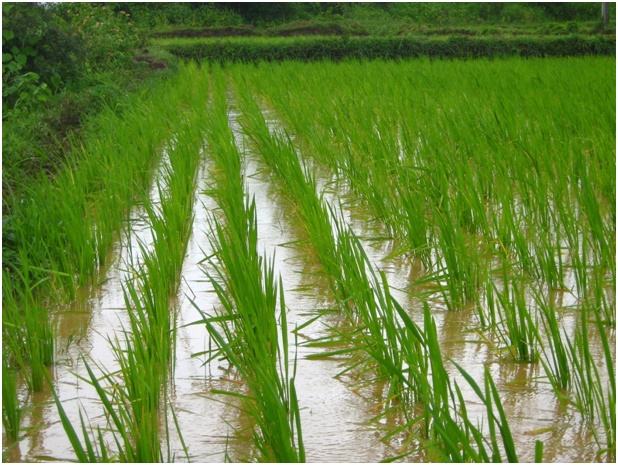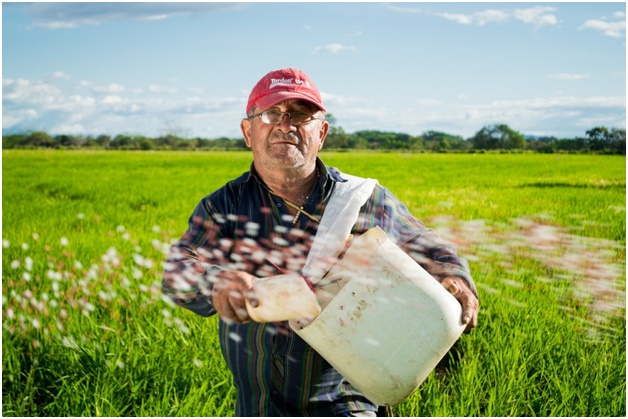In today’s world, freshwater is a pivotal aspect for human survival, as well as for agriculture. But you might be surprised that people only use less than 1% water for personal consumption and a whopping 70% proceeds to growing crops and nurturing animals. Because of the astonishing difference, it’s time that you sit down and understand the impact of thirsty food that fuels humans.
The Water Dependence of Many Agricultural Crops
Cultivating crops is such an intensive process, from planting to watering and harvesting. Just like humans, water has a vital role in plant growth. Crops need water to transport nutrients, which are sourced from the soil. With not enough water, the cells in the plants are affected. These result in drooping of the stem and eventually the dissolution of the plant’s life process. Because of such weight in plant cell development, the water supply must be consistent and sufficient.
More so, a variety of crops are very reliant on water. The water requirement may further differ depending on the type of plant as well as the agricultural environment. With unique physical aspects, some crops require a higher water percentage than others. The most water-intensive crops include rice, sugarcane, cotton, soya, and wheat.
The Importance of Irrigation System

Unfortunately, not all regions have enough precipitation to satisfy the needs of the crops. And with the limited water supply, this can lead to failure in crop production. As a result, they have to maximize various natural resources to get water. And one of the most efficient ways to acquire water is through an irrigation system. This artificial water application is very beneficial for areas where there is limited and irregular rainfall or those with a higher expectancy of dry season and drought. Through this system, water is supplied through pumps, tubes, sprays, and pipes. This supply, however, is not solely obtained from rainfall but also rivers, lakes, groundwater, and reservoir.
There are different irrigation types such as sprinkler, drip, surface, manual, micro, and sub-irrigation. Each of these caters to particular crop production. Therefore, it’s important to assess the needs of the crops before diving into the irrigation process.
Interesting Facts that You Need to Know

- Do you know how much water is needed for your favorite food and products? For beer, you would only need about 49 gallons while mobile phones require at least 240. Surprisingly, a piece of hamburger takes up around 634 gallons! These amounts certainly illustrate how growing food is a more water-intensive activity than the other two. Therefore, farmers around the world have to maximize every water drop to effectively cater to the demands of the crops.
- Though the Earth consists of mostly water, a small percentage is only allocated for drinking, washing, manufacturing, and growing food. Such amount was mentioned in the introduction, and that is only less than 1% of the total available water on Earth.
- Even with the higher percentage of water in the Earth’s composition, many areas around the world are still in crisis mode. These include the Middle East, northern and South Africa, Central Asia, Mexico, and Brazil. Generally, these places are experiencing severe water crises because of the limited access to clean water, along with food and other related conflicts.
- In the United States, if they reduce irrigation demands by at least 10%, this would help solve the freshwater supply in the country. And with such an act, this can support new industrial and urban demands that may arise by 2025.
- If you opt for drip or micro-sprinkler irrigation, you are actually decreasing the water volume supplied to agricultural fields by around 30 to 70%. Furthermore, these efficient irrigation methods increase crop yields by at least 20 to 90%.
- Drip irrigation, in particular, is utilized on fewer irrigated land globally―perhaps less than 2% only.
- An average American farmer can feed around 155 people. This amount is six times as many as in the early days, particularly in the 1960s. With the surge in the population, however, this ratio can be highly affected in the next years. Researchers illustrate that by 2050, the population will increase from 7 billion to 9 billion. Therefore, there are more people to feed yet the number of farmers becomes fewer.
- Ever heard of zombie plants? These are drought-busters that can still grow even with total water deprivation. A lot of researchers are fascinated by using these as tools to help food crops become more drought-resistant.
The Correlation of Your Diet to the Water Footprint

The above-mentioned information gives you an idea of the relationship between food consumption and water supply. And if you’re a fan of eating meat from animals that feed on water-intensive plants like crops, then your water footprint is way higher than others. Studies show that limiting consumption of animal products would have a relatively parallel effect on water supply. For instance, reducing it by half would cut the dietary water requirement in the United States by 37%. In general, the average diet in the United States requires 4, 997 liters or roughly 1, 320 gallons of water per day.
Likewise, food has a substantial effect on water usage around the world as this is constantly transported, imported, and exported for human consumption. For one, the rice that you eat may have been grown from Jordan, which is technically a dry region. Henceforth, the production of this particular rice has gone through a rigorous process. Because of the limited water supply, most of these countries get support from irrigation systems, though these may not be completely efficient and effective.
Another example is that northern China is one of the main exporters of water to south China, providing at least 52 billion cubic meters every year. This water supply is not just meant for crop production but also for other food-related processes and products. And unfortunately, most areas that have a scarcity of food also are the same areas where droughts are persistent. Not only that but these regions often experience intense flooding, which is definitely not beneficial for crop production. Consequently, at least 850 million people across the globe suffer from malnutrition because of the shortage of food that largely depends on water. In parallel, as the water supply becomes less available, so does the consumption of food.
Conclusion
Feeding a thirsty world has always been a challenge for scientists and health professionals. Therefore, you have to do your own part and take account of your water footprint. Always remember, that every little thing counts, most especially in growing crops that fuel Thirsty food―that fuel humanity.



